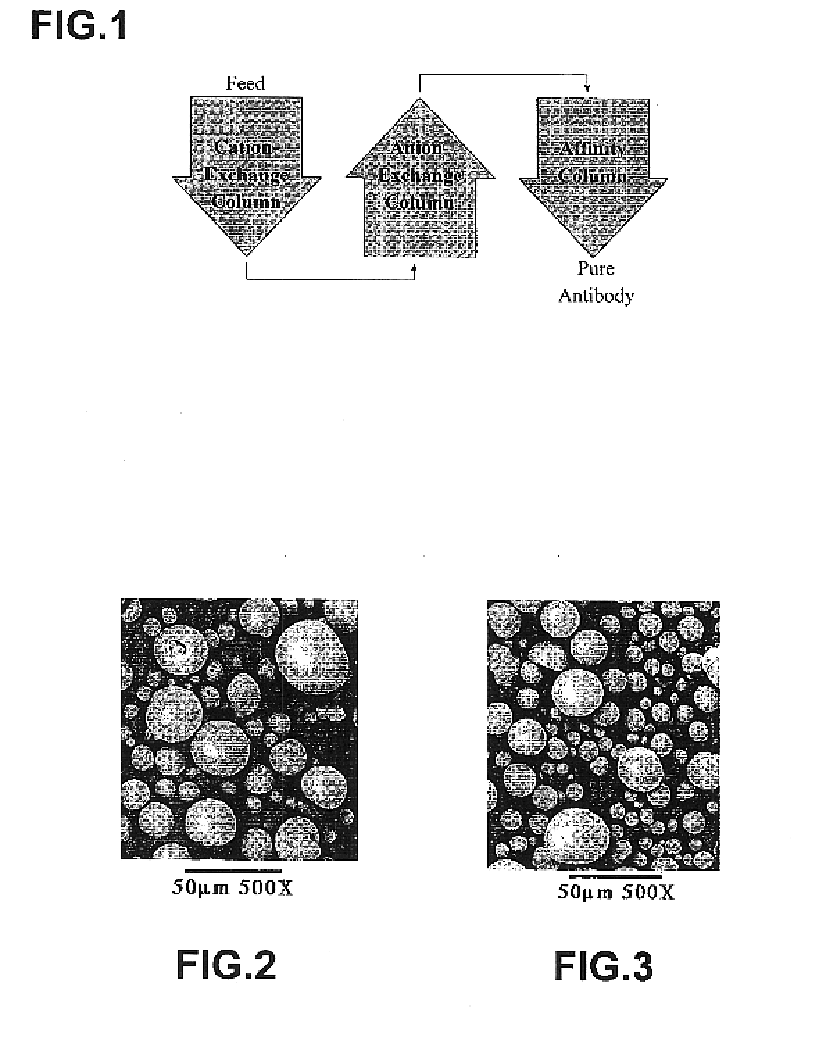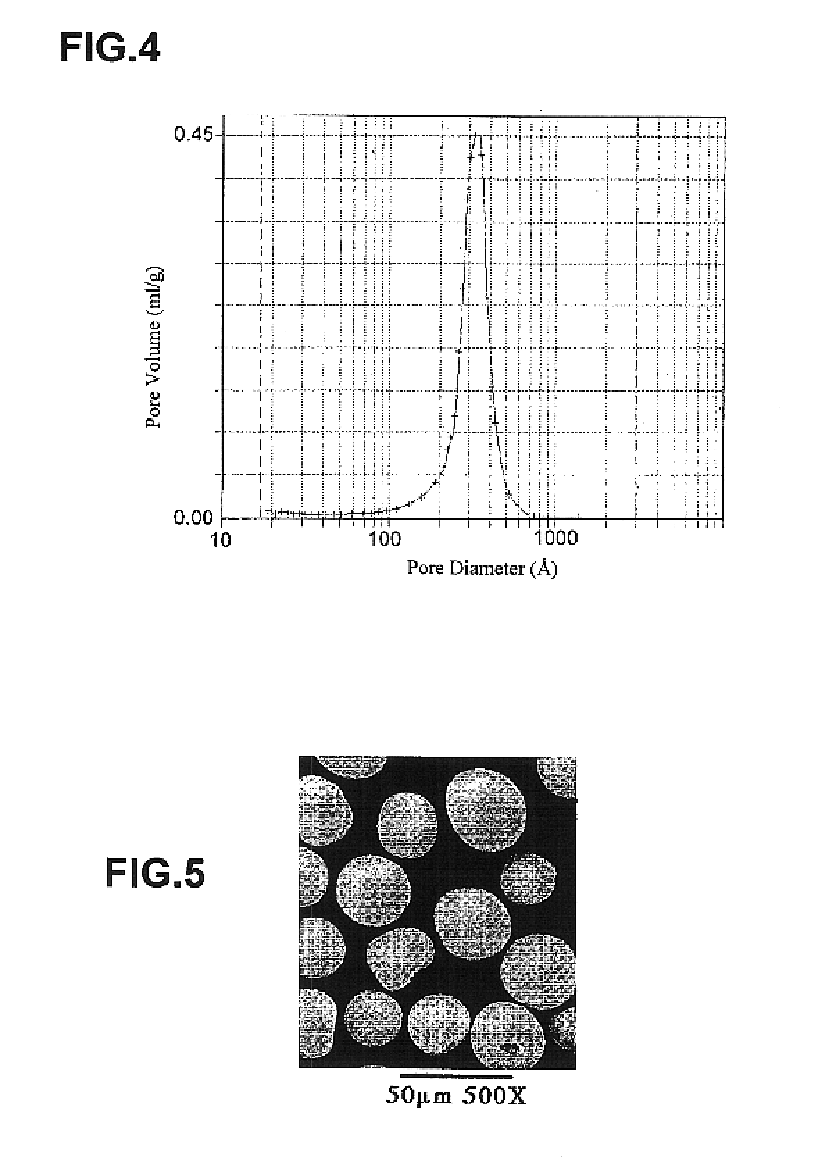High stability porous metal oxide spherules used for one-step antibody purifications
a metal oxide spherule and one-step technology, applied in the direction of peptides, chemical/physical processes, separation processes, etc., can solve the problems of deterioration of the supporting, the overriding cost of process restructuring and the introduction of new protein based drugs, and the lack of adequate stability of the packing
- Summary
- Abstract
- Description
- Claims
- Application Information
AI Technical Summary
Benefits of technology
Problems solved by technology
Method used
Image
Examples
Embodiment Construction
Generally, the present invention relates to modifying a metal oxide such as zirconia, titania, and alumina with ethylene-N,N-tetra (methylenephosphoric acid) for the separation of immunoproteins.
Other metal oxide materials include hafnia, ceria, yttria or magnesia. Other modifying agents are any suitable multi-Lewis base moiety, including, but not limited to, a metal chelator, a polycarboxylate, a polyphosphate such an inorganic phosphate. The modifying agent, such as a phosphate, can be incorporated into the surface of the metal oxide and may comprise between about 0.5-15% by weight, preferably 2-12% by weight.
I. Preparation of Modified Metal Oxide Microspheres
Generally, zirconia microspheres were generated by spray drying colloidal zirconia. Spray-dried zirconia microspheres were further classified and characterized by X-ray diffraction, BET porosimetry and scanning electron microscopy. The zirconia microspheres were also modified with ethylenediamine-N,N-tetra (methylenephosphoni...
PUM
| Property | Measurement | Unit |
|---|---|---|
| Percent by mass | aaaaa | aaaaa |
| Length | aaaaa | aaaaa |
| Length | aaaaa | aaaaa |
Abstract
Description
Claims
Application Information
 Login to View More
Login to View More - R&D
- Intellectual Property
- Life Sciences
- Materials
- Tech Scout
- Unparalleled Data Quality
- Higher Quality Content
- 60% Fewer Hallucinations
Browse by: Latest US Patents, China's latest patents, Technical Efficacy Thesaurus, Application Domain, Technology Topic, Popular Technical Reports.
© 2025 PatSnap. All rights reserved.Legal|Privacy policy|Modern Slavery Act Transparency Statement|Sitemap|About US| Contact US: help@patsnap.com



